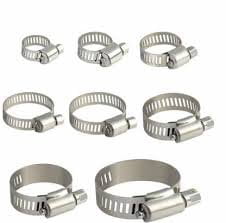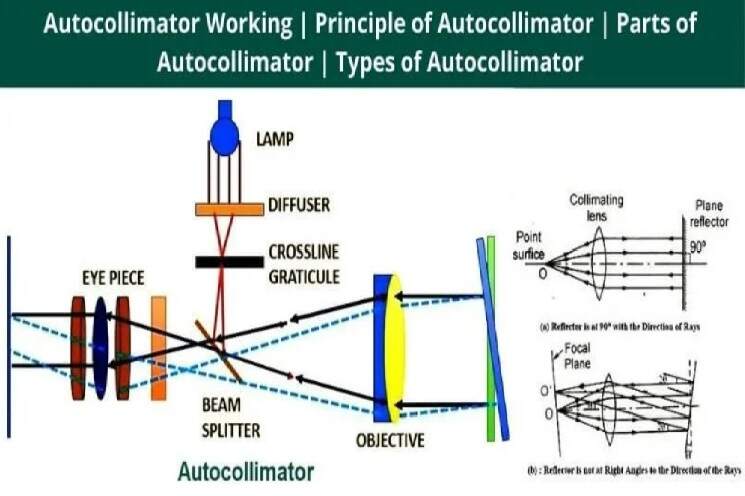Jackscrew or ScrewJack: A jackscrew is a mechanical device that uses a threaded screw and a nut to lift heavy loads or apply a large force. By turning the screw, the nut moves along the length of the screw, generating a lifting or force-applying action.

Jackscrews are used in different industries and applications, such as construction, automotive, and manufacturing, where precise vertical movement or controlled force application is required. They come in various types, including manual, electric, and hydraulic, each suited for specific purposes. Jackscrews provide a reliable and efficient solution for tasks that involve heavy lifting or applying significant force.
Must Read: Various Carpentry Tools
What is screwjack or jackscrew ?
A Screwjack, also known as a jackscrew or a worm gear screw jack, is a mechanical device used to lift heavy loads or apply a large force through the rotation of a threaded screw. It consists of a screw (usually a trapezoidal or Acme thread) that moves through a threaded nut, and a gearbox or worm gear mechanism that translates rotational motion into linear motion.
The basic operation of a jackscrew involves turning the screw using a handle or a motor, causing the nut to move along the length of the screw. As the nut moves, it applies force or lifts the load depending on the application. The mechanical advantage of the jackscrew is derived from the thread pitch, allowing a relatively small input force to generate a much larger output force.
Jackscrews are commonly used in various industries and applications, including construction, automotive, manufacturing, and material handling. They can be found in lifting platforms, adjustable workbenches, lifting tables, industrial machinery, and other equipment where precise and controlled vertical movement or force application is required.
It’s important to note that there are different types of jackscrews, including mechanical jackscrews operated manually, electric jackscrews powered by motors, and hydraulic jackscrews that use hydraulic fluid for lifting or force application. The specific type and design of a jackscrew can vary depending on the intended application and the load requirements.
Suggested Read : Types of pliers
How Screw jack Works?

A jack screw operates by converting rotational motion into linear motion. It consists of a threaded screw and a matching threaded nut. When the screw is rotated, the nut moves along the screw’s length. This movement allows for lifting heavy loads or applying force. The pitch of the thread provides mechanical advantage, enabling a small input rotation to generate a larger linear output movement or force. Jack screws are commonly used in applications requiring controlled linear motion or force application, offering a reliable and efficient solution.
A Jackscrew, also known as a jackscrew or a worm gear screw jack, works on the principle of translating rotational motion into linear motion to lift heavy loads or apply force. Here’s how it typically works, we can understand it in details;
- Components: A Jackscrew consists of a threaded screw, a threaded nut, and a gearbox or worm gear mechanism. The screw has a helical thread that runs along its length, while the nut has a matching thread that engages with the screw. The gearbox or worm gear mechanism is responsible for converting the rotational motion of the input to the linear motion of the screw.
- Rotational Input: The screw jack receives a rotational input, usually through a handle that is manually turned or a motor that provides power. When the input is applied, it causes the screw to rotate.
- Screw-Nut Interaction: As the screw rotates, the nut moves along the length of the screw. The threads of the screw and nut interact, causing the nut to either move upwards or downwards depending on the direction of rotation.
- Lifting or Force Application: The movement of the nut results in the desired action. If the screw jack is being used for lifting, the upward movement of the nut raises the load. If it’s being used for force application, the nut applies pressure or force against an object.
- Mechanical Advantage: The pitch of the screw’s thread provides mechanical advantage. A small rotational input applied to the screw can generate a larger linear output movement or force at the nut. This allows for efficient lifting of heavy loads or applying substantial force.
- Control and Stability: Screw jacks often feature mechanisms for controlling the speed and direction of the lifting or force application. They may include hand-wheels, knobs, or additional gearing to ensure precise and controlled movement.
assembly of screwjack
The assembly of a screwjack involves the installation and arrangement of its components to create a functional unit. Here are the general steps involved in assembling a screw jack:
- Gather the Components: Collect all the necessary components required for the screw jack assembly, including the threaded screw, nut, gearbox (if applicable), mounting brackets or plates, lubrication fittings, and any other supporting parts specified in the design.
- Mounting: Begin by positioning and securing the mounting brackets or plates to the desired location or equipment. Ensure that they are properly aligned and securely fastened to provide a stable foundation for the screw jack.
- Insert the Screw: Insert the threaded screw into the mounting brackets or plates, ensuring it is properly aligned and centered. The screw should be positioned vertically or as specified in the design.
- Install the Nut: Place the threaded nut onto the screw, ensuring that it engages smoothly with the screw’s threads. The nut should be able to move freely along the length of the screw without binding or excessive play.
- Gearbox Assembly (if applicable): If the screw jack incorporates a gearbox or gear mechanism, follow the manufacturer’s instructions to assemble and mount the gearbox onto the screw jack assembly. Make sure all connections are secure and aligned properly.
- Lubrication: Identify the lubrication fittings or points specified in the screw jack design. Apply lubricant as recommended by the manufacturer to ensure smooth operation and reduce friction between the screw and nut.
- Final Checks: Before operation, perform a thorough inspection of the assembled screw jack. Ensure that all components are securely fastened, aligned, and lubricated. Verify that the mounting brackets, plates, and any additional support structures are properly installed.
- Testing: Once the screw jack assembly is complete, perform functional testing to ensure its proper operation. Test the movement, load capacity, and any control mechanisms or adjustments to ensure they function as intended.
It is important to follow the manufacturer’s instructions and any specific guidelines provided for the particular screw jack model being assembled. Proper assembly ensures the reliability, stability, and safe operation of the screw jack during its intended use.
screw jack assembly drawing or diagram

types of screwjack
There are several types of screwjacks available, each with its own design and characteristics to suit specific applications. Here are some common types of screw jacks:
- Mechanical Screw Jack: This is the basic type of screw jack that operates through manual rotation of the input shaft or handle. It utilizes a threaded screw and nut mechanism to provide linear motion and lifting force.
- Worm Gear Screw Jack: Worm gear screw jacks incorporate a worm gear arrangement in the gearbox to convert the rotational motion into linear motion. They offer higher load capacities and improved efficiency compared to mechanical screw jacks.
- Electric Screw Jack: Electric screw jacks are powered by an electric motor, eliminating the need for manual operation. They provide convenient and precise control over the lifting or force application process and can be operated remotely.
- Hydraulic Screw Jack: Hydraulic screw jacks utilize hydraulic fluid to generate force and lift heavy loads. They offer high load capacities and can provide precise control over lifting and positioning. Hydraulic power allows for faster operation compared to mechanical or electric screw jacks.
- Stainless Steel Screw Jack: Stainless steel screw jacks are specifically designed for applications where corrosion resistance is crucial, such as in industries like food processing, pharmaceuticals, or marine environments.
- Miniature Screw Jack: Miniature screw jacks are compact and lightweight versions designed for applications where space is limited or where smaller loads need to be lifted or positioned.
- Ball Screw Jack: Ball screw jacks use a ball screw mechanism instead of a traditional threaded screw and nut arrangement. They offer higher efficiency, reduced backlash, and increased precision for applications that demand high accuracy and repeatability.
These are just a few examples of the types of screw jacks available. The selection of the appropriate type depends on factors such as load capacity, speed, control requirements, and environmental conditions in the specific application.
application of jackscrew
Jackscrews find applications in various industries and scenarios where controlled lifting, positioning, or force application is required. Here are some common applications of jack screws:
- Lifting Platforms: Jack screws are used in lifting platforms or stage systems to raise and lower the platform to desired heights. They provide stability and precise control for positioning.
- Adjustable Workbenches: Jack screws are employed in adjustable workbenches to allow users to raise or lower the working surface to a comfortable height. This helps in reducing strain and promoting ergonomic work conditions.
- Industrial Machinery: Jack screws are utilized in various industrial machinery and equipment for tasks such as adjusting components, aligning parts, or fine-tuning settings. They offer accurate and controlled movement for precise adjustments.
- Material Handling: Jack screws are incorporated into material handling equipment such as lifting tables or scissor lifts. They provide the necessary force to raise or lower heavy loads in a controlled manner.
- Robotics and Automation: Jack screws play a role in robotics and automation applications where precise linear motion is required. They are used to control movement, adjust positions, or provide force in robotic systems.
- Aerospace and Automotive: Jack screws find applications in aerospace and automotive industries, such as aircraft landing gear systems and vehicle jacking mechanisms. They assist in lifting heavy loads or providing precise adjustment capabilities.
- Construction and Engineering: Jack screws are utilized in construction and engineering projects for tasks like lifting structural components, aligning structures, or adjusting equipment positions. They offer stability and controlled movement in these applications.
- Medical and Healthcare: Jack screws are used in medical equipment, surgical tables, and patient lifting systems. They assist in precise positioning, height adjustment, and controlled movement during medical procedures or patient care.
These are just a few examples of the diverse applications of jackscrew. Their versatility, strength, and precise control make them valuable in numerous industries where lifting, positioning, or force application is required.
advantages of jackscrew
The advantages of using a jack screw include:
- High load capacity for handling heavy weights.
- Precise and controlled linear movement.
- Mechanical advantage for efficient force application.
- Stability and safety features to prevent unintended movement.
- Versatility in various applications and industries.
- Cost-effective compared to complex hydraulic systems.
- Reliability and durability for long-term use.
Overall, jack screws offer strength, precision, safety, versatility, and cost-effectiveness in a wide range of applications.
disadvantages of jackscrew
The disadvantages of jack screws include:
- Slower operation compared to other mechanisms.
- Manual operation can be physically demanding and time-consuming.
- Limited vertical reach for lifting.
- Lack of automatic control options.
- Mechanical complexity may require additional components.
- Regular maintenance and lubrication are needed.
- Bulky and heavy in size.
Consider these factors when deciding whether a jackscrew is suitable for your specific application.
Source : Wikipedia





